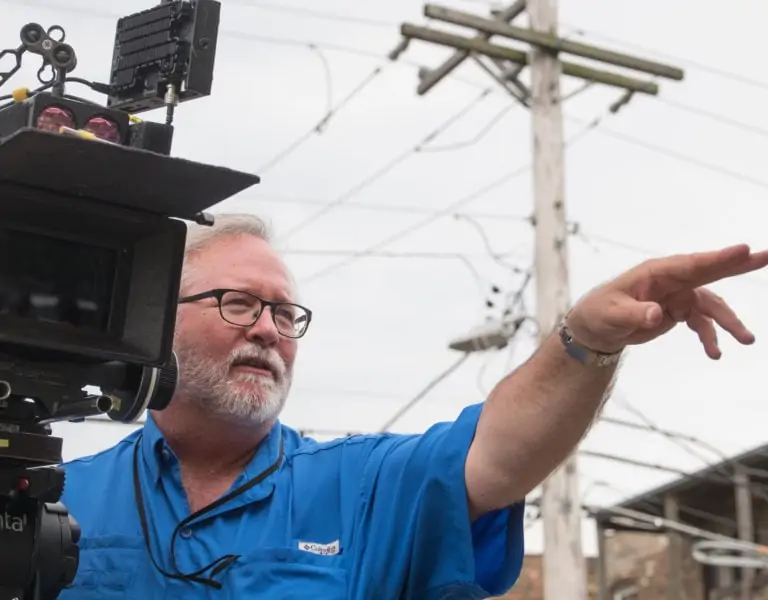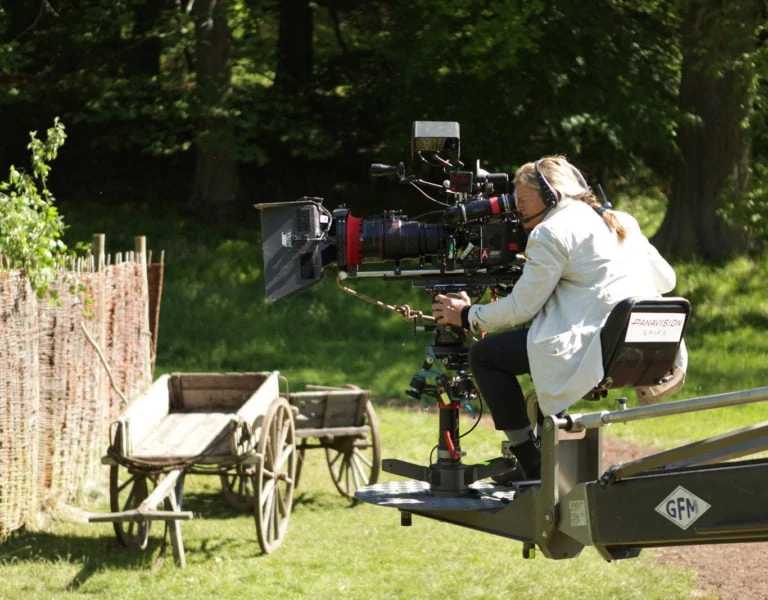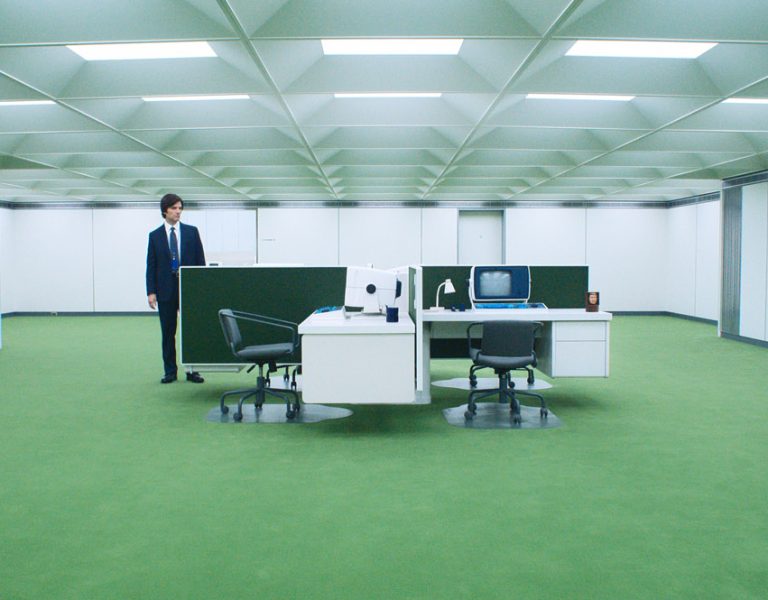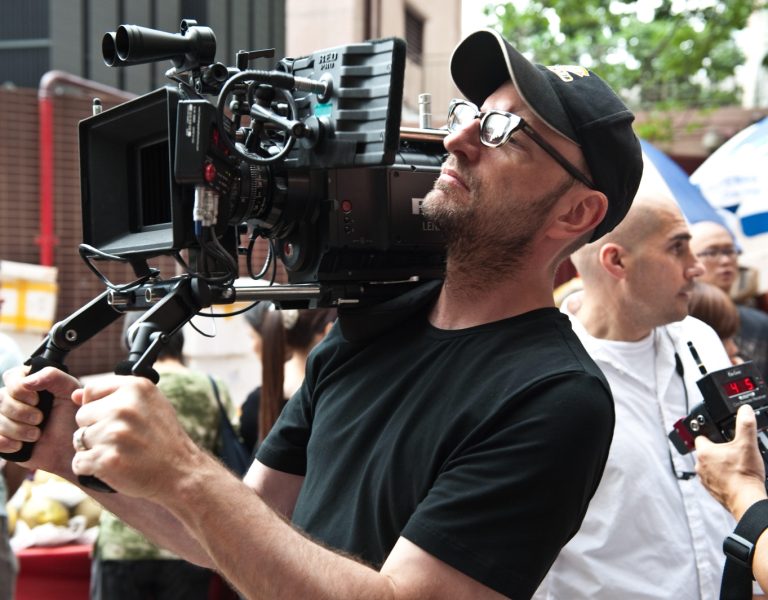75 YEARS YOUNG
OConnor has been a choice of cinematographers for decades. Now, marking 75 years at the top, it is celebrating this milestone with a new model featuring enhanced capabilities, developed in response to customer demand.
Chadwell O’Connor was destined to be a technology luminary. From a young age, he accompanied his father to work at the General Electric factory, sparking his interest in engineering. He pursued this passion at the Stevens Institute of Technology and the California Institute of Technology, earning a degree in mechanical engineering. During World War II, O’Connor joined Douglas Aircraft, expediting aircraft production and repair. In 1949, he became the chief engineer at Pasadena Power and Light, continuing to make significant contributions to engineering.
However, despite working for a municipal energy company, his true passion was steam trains – he even had a steam locomotive at home in later years.
“I heard all sorts of crazy stories, such as O’Connor once bought a steam train from somewhere in Europe and the vessel carrying it capsized crossing the sea,” says Steve Turner, product manager, OConnor.
During the 1940s and ‘50s, as the transition from steam to diesel locomotives was underway, O’Connor took it upon himself to record steam engines before they were decommissioned. He captured this footage on 16mm film, which is now preserved in the California State Railroad Museum in Sacramento.
O’Connor designed and built a Fluid Head camera support that would allow him to film moving locomotives smoothly. In 1949 his innovative design caught the attention of a man while Chadwell filmed a train arriving at Glendale Station in California. That man happened to be Walt Disney, who was so impressed that he ordered 10 for his new film, The Living Desert, which won the first Academy Award for Documentary Feature in 1953. The rest, as they say, is history.
ANNIVERSARY PRESENT
In 2024, OConnor is giving back to the industry by introducing an enhancement to the 2575 fluid head, which Turner explains “are mainly customer-driven”.
“When we introduced a new variant, the smaller 2560 fluid head in 2015, we implemented a new platform release mechanism with improved ergonomics,” he continues. “You can release the platform with one hand while holding the camera with the other, making it easier to adjust the payload for proper balance. Many customers preferred the new mechanism, so we’ve incorporated it into the classic 2575 model as well.”
The carbon fibre cover and colour that customers liked on the 2560 have been copied across, creating a family aesthetic for the two fluid heads. “The other thing we’ve copied from the 2560 is the level bubble,” Turner adds. “On the 2575D there’s an LED that shines down on the top of the level bubble. Unfortunately, from certain directions, all you can see is the reflection of the LED. You can’t actually see the bubble and it makes it a bit hard to level. We’d made an improvement to it on the 2560. Now, the bubble is back lit through a lensing and a diffuser, so you can see the sharp line of the bubble edge within the reticule.”
The 2575 fluid head features a centre lock, a pin that secures the mechanism during rigging and derigging of the camera. This lock holds the platform horizontal, allowing operators to safely load large camera setups without the risk of slipping. Additionally, if the brake is released accidentally, the camera won’t fall if unbalanced.
“But one of the most frequent pieces of feedback for the 2575 is that camera operators would say they’ve accidentally engaged it,” Turner says. “Remember often they’ll be using an eyepiece and they’ll have one hand on the pan bar. The left hand normally rests on the left side of the head, so maybe they’ve accidentally engaged it mid-shot with their little finger. Then in the middle of a take, the pin will fire in and lock the head horizontally. This will ruin the take and I guess it’s just a bit embarrassing.”
The enhanced version on the 2575E requires the operator to place their thumb on the centre lock to engage it. A spring-loaded release button then allows it to disengage. “So, it’s just a bit safer and it saves that embarrassment,” Turner continues.
Additionally, Turner notes another practical improvement.
“When we’ve been out and about, we’ve noticed that most operators use the Mitchell base, which has a key underneath that you have to locate. When mounting it to the tripod, you need to position it correctly. To make this easier, many people put a bit of gaffer tape on top to mark where the key is on the other side. We’ve added a red marking on the top to make it easier to align the head on the tripod.”
So, how will this new offering manifest itself?
“We had limited edition anniversary labels made and the first units will be called the Platinum 2575E,” Turner explains. “Once all those labels are moved on, it will become known as the Ultimate 2575E, continuing the traditional name for the product. So, for a short period, people will have a slightly different badge on their head.”
Customer feedback is paramount, and OConnor has put it into action.
Or as Turner puts it: “It’s mainly just to a facelift to celebrate our birthday and some features that our customers have requested.”

















